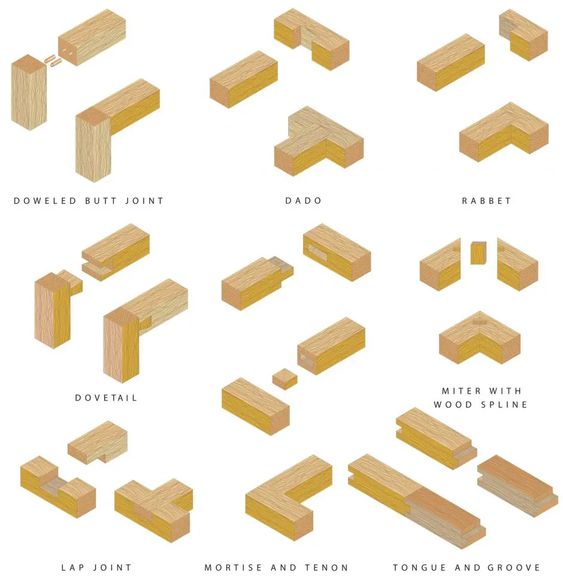
Key Takeaways:
- Understanding the common beginner carpentry mistakes
- Techniques to identify and rectify carpentry errors
- Tips on avoiding future mistakes in woodworking projects
Woodworking, much like any craft, is a series of lessons learned through the process of doing. It’s as much about the mistakes we make as it is about the successes we achieve.
As a beginner, you’re bound to encounter a few bumps along the road, but fear not! Each mistake is an opportunity to hone your skills.
In this guide, we’ll delve into the art of identifying and rectifying typical mistakes that arise in beginner carpentry projects, ensuring you can navigate the path to woodworking mastery with confidence.
Table of Contents
Common Woodworking Mistakes and Their Solutions
Mistake: Measuring and Marking Errors

Precision is paramount in carpentry, and one of the most basic yet vital skills is measuring and marking correctly. Errors in measurement can lead to pieces that don’t fit together as intended, ruining both the aesthetics and structural integrity of your project.
How to Fix:
- Double-check your measurements before making any cuts.
- Use quality measuring tools for accuracy.
- Implement a ‘measure twice, cut once’ approach.
- Create a story stick for repetitive measurements.
Mistake: Choosing the Wrong Wood

Selecting the wrong type of wood can affect everything from workability to the finished look of your project. A clear understanding of wood types is essential for selecting the right material for the job.
How to Fix:
- Research the characteristics of various wood types.
- Choose wood appropriate for the project’s intended use and environment.
- Learn about wood grain patterns and how they affect the final product.
Mistake: Improper Use of Tools

Using the wrong tool for the job or using a tool incorrectly can cause damage to both the workpiece and the tool. Beginners should familiarize themselves with basic carpentry techniques and the proper use of their tools.
How to Fix:
- Spend time to learn about each tool and its specific use.
- Practice proper technique on scrap wood before starting your project.
- Maintain and care for your tools to ensure their effectiveness.
Mistake: Ignoring Grain Direction and Wood Movement
Wood expands and contracts with changes in moisture content, and this seasonal movement can cause issues if not accounted for. Learning about seasonal wood movement is important for creating stable, long-lasting pieces.
How to Fix:
- Understand grain direction and how to work with it.
- Allow for wood movement in your design, especially when joining pieces.
- Acclimate your wood to the environment it will reside in to reduce movement post-construction.
Mistake: Poor Planning and Layout
Jumping into a project without a solid plan is a recipe for disaster. Reading plans and preparing a detailed layout can save you from numerous headaches throughout the carpentry process.
How to Fix:
- Take time to fully understand the project plans before beginning.
- Use sketching or carpentry software to visualize the project.
- Make a checklist of steps to follow, ensuring you don’t miss any crucial points.
Mistake: Unsuitable Joinery

Joints that don’t align or are not strong enough can fail, compromising your project. An introduction to carpentry joinery for beginners can be incredibly beneficial.
How to Fix:
- Experiment with different types of joints on scrap wood.
- Choose the joint that best suits the project’s design and load-bearing requirements.
- Ensure tight and precise fits by measuring correctly and making careful cuts.
Mistake: Inadequate Surface Preparation
The finish of a woodworking project is just as important as the structure. Surface imperfections can stand out, particularly after applying stain or paint. Learning basic finishing techniques is essential for achieving a high-quality finish.
How to Fix:
- Sand the wood thoroughly, starting with coarser grits and working up to finer ones.
- Remove all dust and debris before applying any finish.
- Test finishes on scrap pieces to see the final look before applying to your project.
Mistake: Neglecting Safety Practices
Ignoring safety can lead not only to mistakes but also to serious injury. Beginners must become familiar with carpentry safety fundamentals early on.
How to Fix:
- Always wear appropriate personal protective equipment (PPE).
- Keep your workspace clean and organized to prevent accidents.
- Learn and follow all safety guidelines for each tool you use.
Mistake: Using Poor Quality Lumber

Using subpar material can affect the strength, appearance, and durability of your project. Knowing how to select quality lumber is a skill that will pay off in the long run.
How to Fix:
- Inspect lumber for defects such as knots, warps, or cracks before purchasing.
- Choose lumber that has been properly dried and stored.
- Purchase lumber from reputable sources that guarantee quality.
Mistake: Overlooking the Importance of Tool Maintenance

Dull blades or uncalibrated tools can ruin a project. Good tool maintenance and care habits are as important as the skills used in the actual woodworking.
How to Fix:
- Regularly sharpen blades and bits for the best performance.
- Calibrate tools like squares and levels to ensure accuracy.
- Clean and lubricate tools to prolong their life and functionality.
Mastering Repairs in Carpentry
Once you’ve identified the issue, the next step is actually correcting it. The process of repair will depend on the specific problem, but here’s a list of general repair techniques that will come in handy:
Repair Techniques List
- Dismantling and Reassembling: For joinery mistakes, sometimes starting over is the best option.
- Wood Filler: For small cracks or gaps, wood filler can save the day.
- Sanding: To smooth out imperfections or to fix minor errors in wood surface preparation.
- Replacing Components: Sometimes, it’s easier and more effective just to remake a faulty piece.
- Adjusting for Fit: This might mean sanding down a tenon or widening a mortise for a better fit.
By developing these repair skills, not only do you improve the chances of salvaging a project that went awry, but you also gain invaluable experience and confidence. Remember, every woodworking mistake is a steppingstone to greater proficiency. Stay diligent in your practice, learn from each error, and observe how your craftsmanship improves with time.
Avoiding Future Mistakes in Woodworking Projects
While fixing mistakes is a valuable skill, the ultimate goal is to avoid making them in the first place. Here are some strategies to help you minimize errors in your future carpentry endeavors:
| Strategies to Minimize Errors | Description |
|---|---|
| Thorough Planning and Preparation | Having a detailed plan and checklist can prevent many common errors. |
| Understanding Materials and Tools | A deep knowledge of your materials and tools allows you to use them more effectively. |
| Patience and Attention to Detail | Rushing leads to mistakes; take your time and pay close attention to detail. |
| Practice and Experiential Learning | The more you work with wood, the better you’ll understand its nuances and how to manipulate it. |
| Continuous Education and Improvement | Keep learning new techniques and skills. Carpentry is a lifelong learning journey. |
By taking a mindful and studious approach to woodworking, you can greatly reduce the number of mistakes you make and increase the quality of your work. Implement these strategies, and over time, you’ll find that your projects run smoother and your craftsmanship becomes more refined.
Conclusion
Applying the solutions and strategies discussed here will aid in turning your woodworking blunders into valuable lessons. Stay persistent, maintain a positive attitude, and remember that mastery comes with patience and practice.
Whether it’s measuring with precision, selecting the right lumber, or ensuring your safety, every aspect of carpentry plays a role in the quality of your final product. Keep learning, keep creating, and let each project be a testament to your growth as a carpenter.
Ready to embark on your next woodworking adventure with confidence? Stay tuned for more insights and tips to elevate your carpentry skills to new heights!

